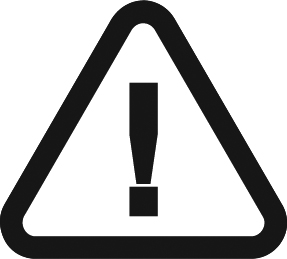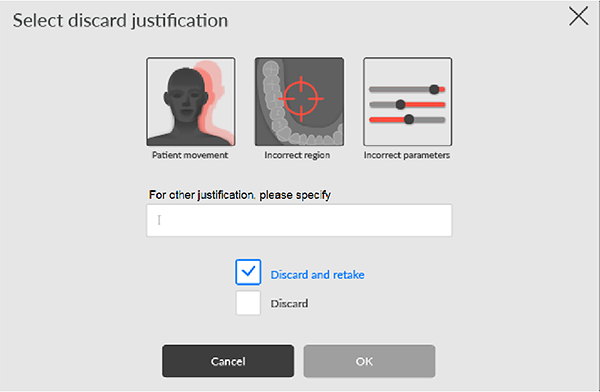Software Overview > Acquisition Interface
2D Quality Control Interface Overview (DICOM Environment)
The DICOM 2D Quality Control interface allows you to check the quality of an acquired image (for example, position of the patient, image centering) to enable you to accept or reject the image.
 |
IMPORTANT: The displayed image is for information purposes only. DO NOT use it for diagnostic purposes. |
Figure 12 - DICOM 2D Quality Control Interface

|
1 |
Image manipulation buttons - Provide basic image analysis functions (zoom, brightness, slider, reset, mirror, negative filter, information). |
|
2 |
Preferred image view buttons - Click to apply to image processing preferences that you select in the CS Adapt module configuration screen. |
|
3 |
CS Adapt image presets - Name of current CS Adapt preset applied to an image. |
|
4 |
If you are not satisfied with an acquired image, click
Select one of the displayed reasons, or enter other reasons in the text field.
|
|
5 |
If you are satisfied with an acquired image, click |
|
6 |
Opens or closes the panel. |
|
7 |
Display 2D key image - Enables you to add a copy or to create sub-images of the original image. |
|
8 |
Remove 2D key image - Click to discard all images. |
|
9 |
Gallery - Panel that displays copies of an image. |
| 10 | Menu - Provides access to the Quality Check History sub-menu which gives access to the history of rejected images. |
Panoramic Acquisition Interface Overview
2D Quality Control Interface Overview for the Dental Environment
3D Acquisition Interface Overview
3D Quality Control Interface Overview for the Dental Environment
DICOM Worklist Interface Overview
3D Quality Control Interface Overview for the DICOM Environment
 . The following window displays:
. The following window displays:
 . The image transfers automatically to the
. The image transfers automatically to the 